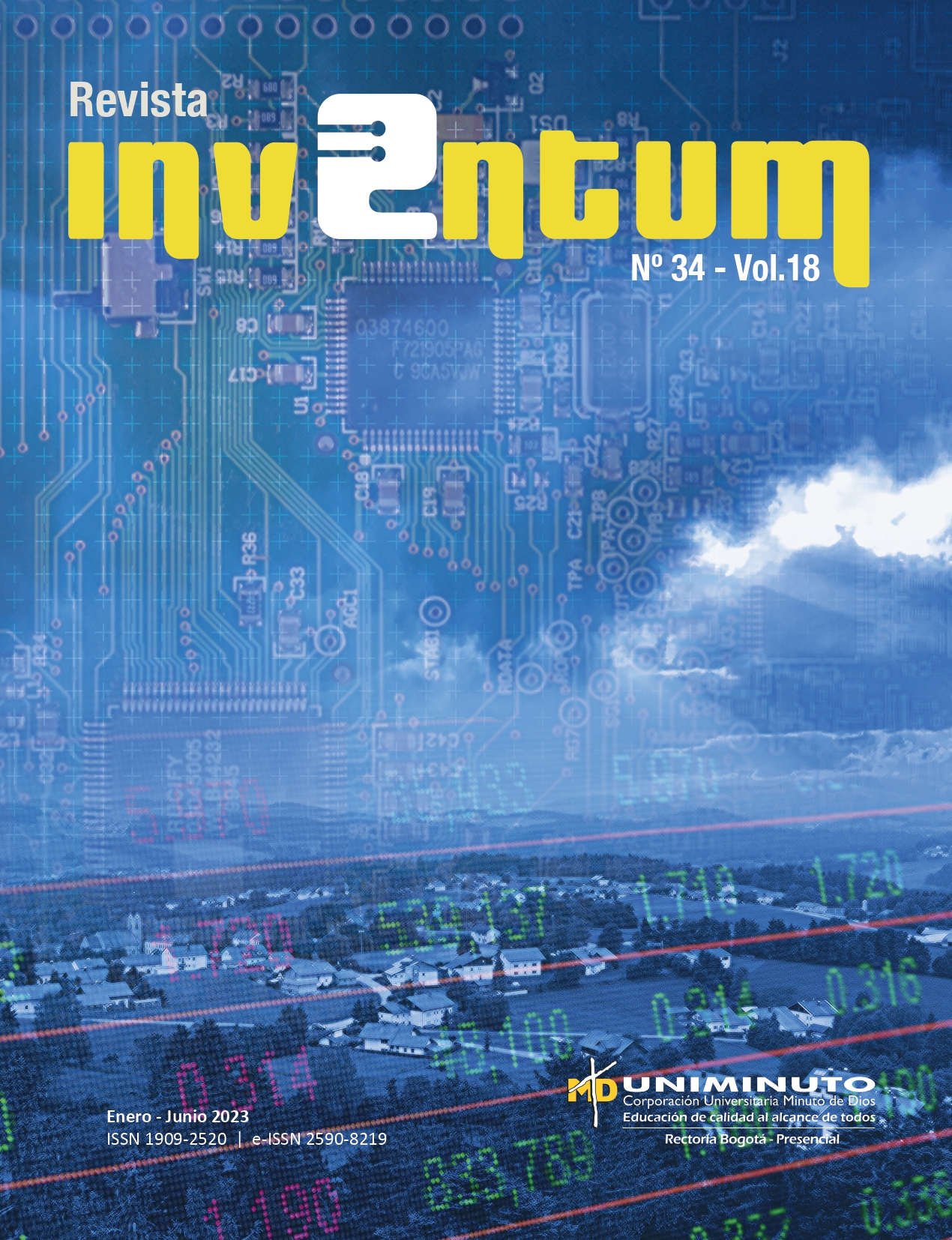Desarrollo Sostenible Rural: Análisis De La Infraestructura De Veraguas-Pacho, Cundinamarca
Contenido principal del artículo
Resumen
El desarrollo sostenible es muy importante para que las poblaciones rurales puedan tener un crecimiento socioeconómico, manteniendo sus costumbres y creencias. En Colombia algunas de esas poblaciones rurales están conformadas por desplazados del conflicto armado, mujeres, hombres, niños y ancianos, quienes deben dejar sus arraigos para enfrentarse a la incertidumbre de un nuevo inicio en un ambiente desconocido. La investigación relacionada en este artículo describe el estudio realizado en la Vereda de Veraguas perteneciente al Municipio de Pacho, Cundinamarca, donde se encuentra una comunidad rural conformada por familias que fueron desplazadas y que buscan integrar el desarrollo sostenible para mejorar su calidad de vida. Para poder generar desarrollo sostenible rural es necesario conocer las problemáticas que pueden impedir que esto se genere, para el caso en estudio se observaron varias necesidades respecto a la infraestructura, además de bajos niveles de educación y desigualdad social. Como resultado se pudo definir un modelo socioeconómico que ayude a proponer una guía para el desarrollo sostenible rural acorde a la problemática de la comunidad de Veraguas.
Citas
J. H. López, “Las vías terciarias en Colombia”, Sociedad Antioqueña de Ingenieros y Arquitectos, 2020, Mayo 6. [En línea]. Disponible en: https://sai.org.co/las-vias-terciarias-en-colombia-sai/
C. L. Alados, P. Errea, M. Gartzia, H Saiz, and J. Escos, “Positive and negative feedbacks and free-scale pattern distribution in rural-population dynamics”. PLoS One, vol. 9, no. 12, e114561, 2014.
Doi: https://doi.org/10.1371/journal.pone.0114561.
X. Yin, J. Chen, and J. Li, “Rural innovation system: Revitalize the countryside for a sustainable development”, Journal of Rural Studies, vol. 93, pp. 471-478, 2022. Doi: https://doi.org/10.1016/j.jrurstud.2019.10.014.
N. Petković-Grozdanović, B Stoiljković, and M. Shubenkov, “Location criteria relevant for sustainability of social housing model”. MATEC. Web of Conferences, vol. 73, 06001, 2016. Doi: https://doi.org/10.1051/matecconf/20167306001.
C. Awinpoka, M. Mwinlabagna, and M. Kolbe, “Empowering rural women for sustainable develop-ment through the provision of water infrastructure in north-western Ghana”, World Development Perspectives, vol. 21, pp. 1-10, 2021. Doi: https://doi.org/10.1016/j.wdp.2021.100287.
J. Schumpeter, The theory of economic deve-lopment: An inquiry into profits, capita I, credit, interest, and the business cycle (1 ed.). Routledge, 2017. Doi: https://doi.org/10.4324/9781315135564.
I. Cardinale, “Microfoundations of institutions and the theory of action”, Academy Of Management Review, vol. 44, no. 2, pp. 467-470, 2018. Doi: https://doi.org/10.5465/amr.2018.0339.
J. Fernandez-Serranó, J. A. Martínez-Román, and I. Romero, “The entrepreneur in the regional innovation system. A comparative study for high- and low-income regions”, Entrepreneurship & Regional Development, vol. 31, no. 5-6, pp. 337-356, 2018. Doi: https://doi.org/10.1080/08985626.2018.1513079.
B. Asheim, T. H. Lawton Smith, and C. Oughton, “Regional innovation systems: Theory, empirics and policy”, Regional Studies, vol. 45, no. 7, pp. 875–891, 2011. Doi: https://doi.org/10.1080/00343404.2011.596701.
J. Fernández-Serrano, and I. Romero, “About the interactive influence of culture and regulatory barriers on entrepreneurial activity”, International Entrepreneurship and Management Journal, vol. 10, no. 4, pp. 781–802, 2014. Doi: https://doi.org/10.1007/s11365-014-0296-5.
E. Gorbenkova, E. Shcherbina, and A. Belal, “Rural areas: Critical drivers for sustainable development”, IFAC-PapersOnLine, vol. 51, no. 30, pp. 786-790, 2018. Doi: https://doi.org/10.1016/j.ifacol.2018.11.195.
E. Shcherbina, and E. Gorbenkova, “Smart city technologies for sustainable rural development”,
IOP Conference Series: Materials Science & Engi-neering, vol. 365, no. 2, pp. 022039. Doi: https://doi.org/10.1088/1757-899X/365/2/022039.
E. Shcherbina, and E. Gorbenkova, “Factors influencing the rural settlement development”, IFAC-PapersOnLine, vol. 52, no. 25, pp. 231-235, 2019. Doi: https://doi.org/10.1016/j.ifacol.2019.12.478.
S. Sheina, and A. Shvets, “Methodological foun-dations for pre-investment assessment of an inte-
grated sustainable development area for the Construction of Social Institution”. In: A. Beskopylny, M. Shamtsyan, and V. Artiukh, (eds), XV International Scientific Conference “INTERAGROMASH 2022”. Lecture Notes in Networks and Systems, vol. 575, pp. 2970–2979, Springer. Doi: https://doi.org/10.1007/978-3-031-21219-2_333.
S. Hussain, R. Maqbool, A. Hussain, and S. Ashfaq, “Assessing the socio-economic impacts of rural infrastructure projects on community development”, Buildings, vol. 12, o. 7, pp. 947, 2022. Doi: https://doi.org/10.3390/buildings120 70947.
Unidad para las Victimas. “Nuevo punto de aten-ción a víctimas en Pacho (Cundinamarca)”, Unidad para las Víctimas, 2022. Disponible en: https://n9.cl/72vq4
A. A. Akgün, T. Baycan, and P. Nijkamp, “Rethinking on sustainable rural development”, European Planning Studies, vol. 23, no. 4, pp. 678-692, 2015. Doi: https://doi.org/10.1080/09654313.2014.945813.
M. M. G. T. De Silva, and A. Kawasaki, “Socioeconomic vulnerability to disaster risk: a case study of flood and drought impact in a rural Sri Lankan community”, Ecological Economics, vol. 152, pp. 131-140, 2018. Doi: https://doi.org/10.1016/j.ecolecon.2018.05.010.
T. H. Dewan, “Societal impacts and vulnerability to floods in Bangladesh and Nepal”, Weather and Climate Extremes, vol. 7, pp. 36-42, 2015. Doi: https://doi.org/10.1016/j.wace.2014.11.001.
G. P. Enerlan, “An analysis on the economic resilience and vulnerability of local economies in the Philippines to hydrometeorological disasters”, International Journal of Disaster Risk Reduction, vol. 84, pp. 34-47, 2023. Doi: https://doi.org/10.1016/j.ijdrr.2022.103447.
I. Ramos Vidal, “Desplazamiento forzado y adaptación al contexto de destino: el caso de Barranquilla”, Perfiles Latinoamericanos, vol. 26, no. 51, pp. 301-328, 2018. Doi: https://doi.org/10.18504/pl2651-012-2018.





